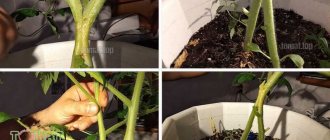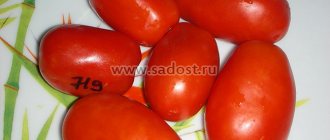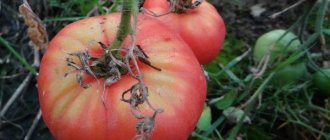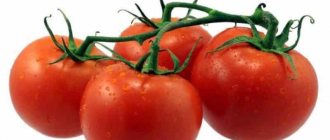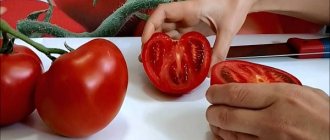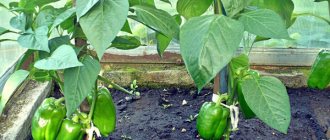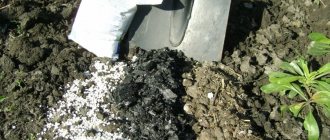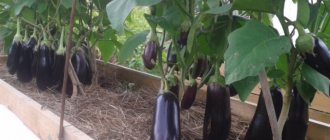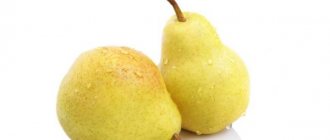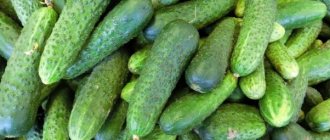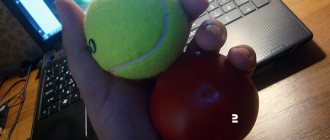Modern science can do a lot. For example, growing both tomatoes and potatoes on one plant, which allows you to save space on your summer cottage, water, because you only have to water one plant, and physical strength, because you only have to care for one bush. And if you don’t have a plot of land or a summer house, then you can grow your own potatoes and tomatoes on the balcony by planting the plant in a large container or in an ordinary bucket.
On the Internet and in specialized literature you can find several different names for this amazing, exotic plant: tomofel, tomatofel, tomato, potato maker, tomatofel. And British scientists named their brainchild TomTato. But you shouldn’t look for tomato planting material on sale. This is not the result of genetic engineering and the seeds from which such a miracle could be grown simply do not exist.
Pomidofel – tomato or potato?
Potatoes and tomatoes belong to the same family, Solanaceae. That is why the idea of bringing a plant that would yield two types of vegetables at once was undertaken quite a long time ago. The first known attempt was made by the American Luther Burbank (1849-1926). Using the method of selection, he developed a new plant from potatoes, Pomato potato + tomato. The Burbank hybrid produced a harvest of tasty yellow potatoes and equally tasty, aromatic fruits reminiscent of white tomatoes. But repeating his experiment turned out to be quite difficult; it did not deserve attention and was gradually forgotten.
The next attempt in the 3 years of the 20th century was made by the Russian scientist N.V. Brusnetsov. His experience, on the contrary, caused a wide positive reaction, both from the public and in scientific circles. “Dwarf Brusentsov,” as the author called the plant, was the result of grafting a tomato onto a potato.
A similar method was developed by scientists from the Max Planck Institute for Developmental Biology (Tübingen, Germany) in 1977. But the greatest success was achieved by the British employees. Paul Hansord, the company's chief technologist, admitted that he once saw something similar and decided to reproduce it. For more than 15 years, he and his colleagues from New Zealand worked on creating the technology and, as a result, in 2013 they were able to present the miracle vegetable TomTato to a wide range of “spectators.”
Today Thompson & Morgan sell over 100,000 plants a year all over the world. The creators claim that their product has great prospects, because tomatoes can be grown indoors in winter and summer, producing tasty and aromatic cherry tomatoes (the company uses this particular variety of tomatoes), up to 500 pcs. from a bush, and several kilograms of white potato tubers.
Caring for grafted seedlings
Active fruiting and large fruits are achieved not only by ablation, but also by high-quality plant care. Grafted seedlings develop faster due to the doubled root system, so care must be appropriate:
- Where the stepsons get closer, the leaves are removed. This allows for improved ventilation of the tomato vines.
- A few leaves are left on the rootstocks to improve fruiting.
- Shoots in the leaf axils are removed.
- Plants that have reached 170-180 cm are pinched.
Spliced seedlings are watered with warm rainwater at the root, rather than sprayed with water. For better results, dig plastic bottles with the bottom cut off next to the bush.
Pros and cons of vaccinations
The cost of seedlings is quite high, because the company is the absolute “owner” of the market, and the demand for the miracle plant is constantly growing. It is believed that it is almost impossible to vaccinate at home. However, Russian gardeners successfully repeat the experience, because the results allow them to obtain several advantages at once:
- by growing two different types of vegetables on one bush, space in the beds is saved;
- all the beneficial properties of each vegetable are preserved and the taste does not suffer;
- fruits and tubers are smaller in size, but their total volume remains at the same level;
- the opportunity to grow an original, exotic plant on your site that your neighbors don’t have.
Of course, there are a number of disadvantages that you will have to come to terms with:
- It will not be possible to collect seed material from the plant; seedlings are obtained only by grafting, and the first 2-3 weeks after this the plants require careful care and constant attention;
- not all vaccinations are successful; some plants will inevitably die until the gardener adapts to the peculiarities of this agricultural technique;
- nutrients are distributed unevenly throughout the fruits, so that “there is enough food for everyone” you will have to repeatedly apply fertilizers to the soil.
Caring for grafted seedlings
Active fruiting and large fruits are achieved not only by ablation, but also by high-quality plant care. Grafted seedlings develop faster due to the doubled root system, so care must be appropriate:
- Where the stepsons get closer, the leaves are removed. This allows for improved ventilation of the tomato vines.
- A few leaves are left on the rootstocks to improve fruiting.
- Shoots in the leaf axils are removed.
- Plants that have reached 170-180 cm are pinched.
Spliced seedlings are watered with warm rainwater at the root, rather than sprayed with water. For better results, dig plastic bottles with the bottom cut off next to the bush.
Grafting methods
Grafting tomatoes onto potatoes is not much more complicated than a similar procedure for other plants. This method has been actively developed in the last century. It gives the gardener a lot of advantages:
- strengthening the plant’s immunity to negative environmental influences;
- reduction of vegetative development period;
- increasing productivity;
- the possibility of obtaining two varieties of crops from one plant.
Most often it is used for fruit plants of one type. Interspecific vaccinations can also be carried out, but they are associated with a number of difficulties. Grafting herbaceous plants also involves the need to solve a number of problems, since the stems do not have a supply of nutrients that they could consume while the process of fusion continues.
In order to graft, you need to have two plants: a rootstock (potato) and a scion (tomato). They are grown separately in containers for germination, seedling boxes, filled with store-bought or home-prepared soil mixture (soil, humus, peat in a 1:1:1 ratio). The “operation” can be carried out after the thickness of the stems reaches 0.5-1 cm. At later stages, the stems become coarser and the likelihood of fusion decreases. Vaccination can be done in several ways.
Copulation
This method, known as cutting grafting, is suitable for thin plants and is therefore optimal for potatoes and tomatoes. Using a sharp, sterile knife, carefully cut the stems at the same angle. You can make a V-shaped cut with the same slope. This will maximize the contact area and increase the possibility of plant engraftment.
The upper part of the potato stem is discarded, and the trimmed top of the tomato is applied to the lower part, pressed tightly and wrapped with a bactericidal plaster. The resulting plant is removed to a dark, cool place where there are no drafts, which increases its chances of “survival.”
Grafting into cleft
One of the simplest ways. Suitable for cases where the thickness of the stem of the rootstock (potato) is greater than that of the scion (tomato). The technology is quite simple; it also requires a sharp, sterile knife or blade. The top of the tomato is cut off so that it is higher than the first two leaves, but the thickness of the stem should be less than that of the potato. The end is carefully cut off on both sides, giving it the appearance of a wedge. The resulting stem is placed in a container of water.
The top of the potato bush is also carefully cut off at the selected height, perpendicular to the stem. It will no longer be needed and can be thrown away. A split (incision) is made on the cut, the depth of which should be equal to the size of the wedge-shaped cut made on the apical part of the tomato: approximately 1-1.3 cm. The scion is inserted into the split and secured with a clip, adhesive plaster, or foil. In order to reduce the load on the stem, the plant is tied to a support.
Ablactation with tongue
This method, due to its effectiveness and high survival rate, is widely used for grafting various garden plants. The technology differs from the previous two in that the scion is not cut off from the root. The procedure consists of cutting the stem to a depth of 1/3 or 1/2 of its thickness, while its length should be 3-4 times the thickness. The rootstock is cut from bottom to top, and the scion, on the contrary, is cut from top to bottom. The resulting “tabs” are inserted into each other and secured with a bactericidal adhesive plaster or clip. To prevent the plants from breaking during the grafting process, the stems are tied to sticks. After connecting the stems, the resulting plant is attached to a support.
The success of this technique is explained by the fact that, unlike the first two options, when ablactivated immediately after grafting and for 1-1.5 weeks, the resulting hybrid has 2 roots, which provides it with sufficient water and nutrients.
After a week or a week and a half, when the cuts have grown together, the top of the potato sprout is cut off, and the root of the tomato sprout.
Vegetable herbaceous plants, which have a very flexible stem in which, unlike trees and shrubs, do not have nutrient reserves, find it more difficult to cope with the temporary loss of the root system, leading to a limitation of water and nutrition. Therefore, after performing the “operation” until the cut is completely healed, the hybrid should be in a warm place without access to direct sunlight in an atmosphere with high humidity. To do this, plants are covered with jars, plastic bottles, plastic film or special covering material, watered as often as possible, sprayed with warm water, and other measures are taken to ensure high humidity.
Preparatory work
Harness
Experienced gardeners use strips of non-woven material 0.5 mm wide as strapping. If there is no such material, then it can be replaced with gauze strips, clothespins for fixing the orchid peduncle, soft foil, just linen rope or twine. Some vegetable growers use stretch film or electrical tape, but they have opponents who believe that a greenhouse effect occurs under the film, promoting the formation of rudimentary roots at the grafting site.
Suitable varieties
It is better to subject low-growing varieties of tomatoes (Astrakhansky, Zagadka, Raja, Khlebosolny and others) to ablation: the heavy stems of indeterminate varieties may break at the point of splicing.
also grow tomatoes of different varieties, one of which has excellent taste (Gina, Appetizing, Waterfall, Family, Abundant, Aphrodite and others), and the other is resistant to diseases (Alaska, Firebird, Bohemia, Blitz, Sensei and others ).
Seed preparation
Before sowing, seeds are pre-soaked in a 1% solution of potassium permanganate, in a solution of aloe juice (1:1 with water), in a solution of Fitosporin. This will allow the seeds to strengthen the immune system, become more resistant to diseases, and produce a bountiful harvest later.
Read more about how to treat tomato seeds before sowing in a separate article.
Necessary equipment
Planting seedlings will require a large number of seedling containers. For these purposes, you can use milk cartons, cut plastic bottles, flower pots with a diameter of 11 - 12 cm, etc. For ablation you will also need a sharp blade, cotton wool, and salicylic alcohol.
Landing in the ground
Usually it takes about 2 weeks for the grafting site to heal (with ablactation - a little less). During this time, especially at the initial stage, the tomato top withers slightly. After 1-1.5 weeks, if the process was successful, it will “become more cheerful” and begin to grow, new leaves will begin to appear on it. At this stage, the young tomato plant can be planted in open ground.
But even after this, the plant will continue to require increased attention. You need to make sure that it does not get too cold, does not suffer from the bright sun, remove weeds in a timely manner, loosen the soil, water regularly, and apply organic and mineral fertilizers.
Over time, the bandage can be removed. About a month after planting in a permanent place, the tomato will begin to bloom, after which fruits will form on it, and tubers will form under the surface of the soil.
How to harvest?
Experiments conducted by scientists, the cultivation of TomTato by many gardeners around the world, and the practice of Russian summer residents have shown that the grafted plant develops well and is highly resistant to various diseases and insect pests that affect potatoes and tomatoes. Most often they are overcome by the Colorado potato beetle and late blight, to combat which it is necessary to promptly apply special pest control agents.
Even when the first experiments were carried out, some scientists feared that the corned beef contained in potato tops, a highly toxic enzyme, would penetrate into tomato berries, which would negatively affect their taste. Fortunately, this doesn't happen. The corned beef content in tomatoes does not exceed the norm, the fruits are absolutely non-toxic, have a pleasant taste and aroma.
Harvesting is carried out as usual: tomatoes are picked as they ripen (redden), and tubers are dug up when they reach technical maturity, in late August - early September, depending on the region of cultivation.
